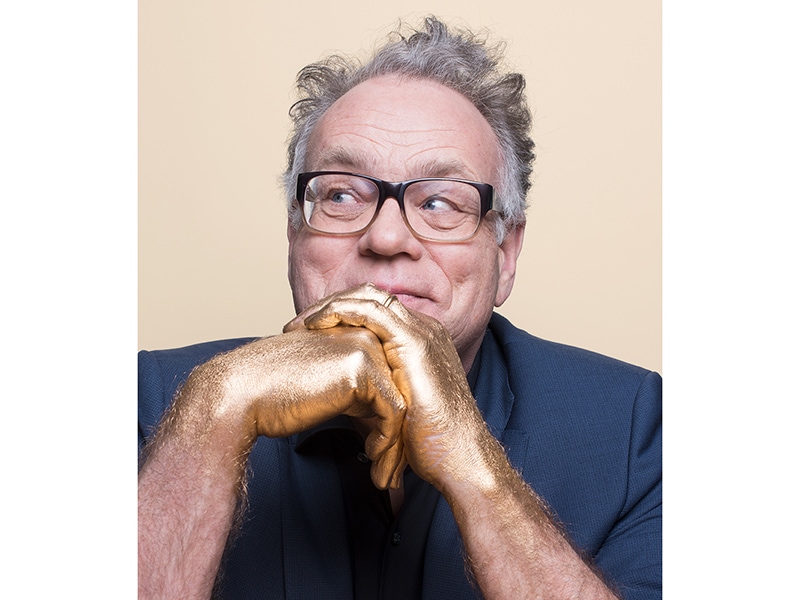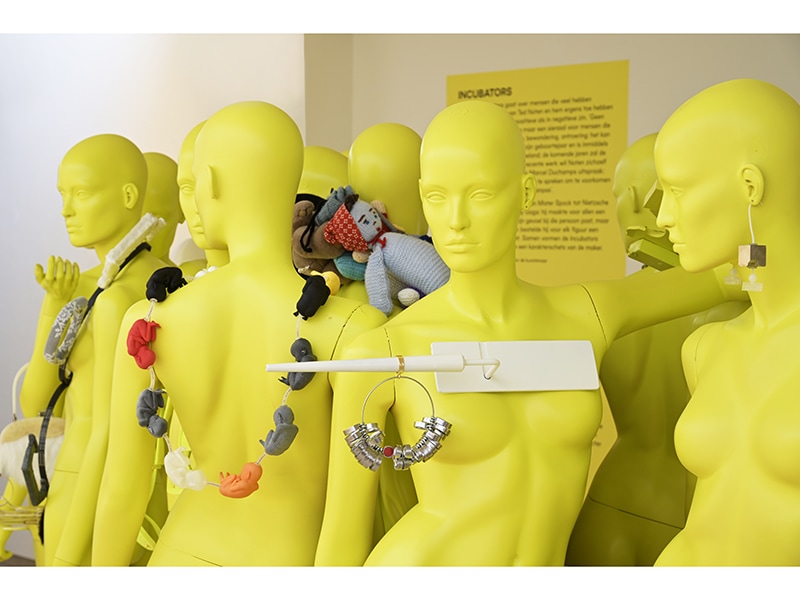- The winner of the Young Artist Award receives a prize of US$7,500, and each of four finalists will get US$1,000.
- The winner and finalists will also be featured in an exhibition during Schmuck, in March 2024.
- AJF’s Young Artist Award advances the careers of rising artists by acknowledging promise, innovation, and individuality. Contemporary jewelry artists aged 35 and under are invited to apply for this international prize in contemporary art jewelry, which is held every two years.
AJF will accept applications through November 6, 2023. Go here to get the guidelines and to apply.

The jury for this award cycle consists of Ted Noten, Atty Tantavit, and Mallory Weston, who won the 2022 Young Artist Award.
Marta Costa Reis: First, a little background. Please explain how you were introduced to contemporary jewelry.
Ted Noten: I started making jewelry from silver wire and shells/beads when I was traveling to India and Africa at the end of the 70s, and Athens was the doorway to all these countries.
I saw a German man making his work and he noticed my interest. He was my first teacher. Two days later I was sitting on the street side beside him and selling my stuff, arranged on a piece of velvet, for $5 to $7 each.
A few years later I went to the art school with my stuff and they were a bit shocked that I had the guts to come in with this artisanal work. But they believed in me and gave me the chance to broaden my craft. Three years later I went to the Rietveld Academie, in Amsterdam, because the crafting was not enough for me. I wanted to work conceptually and to explore my artistic side.

What do you do now in relation to jewelry? You currently have a new exhibition in Amstelveen, in the Netherlands. Tell us about that.
Ted Noten: Through the years I have strived to broaden jewelry concepts and also to bring jewelry into a new context. The exhibition at Museum JAN is a mixed media one where jewelry finds its equals, meaning for me that a ring can compete with a painting. It’s not the hierarchic position (through the ages) that defines [the work]—it is its quality. Somewhere in history, jewelry lost its importance. In the Renaissance we were the top rankers.

These last few years have seen a lot of disruption and uncertainty. What surprises you most in the way younger generations respond to the fast-changing world around them?
Ted Noten: Mainly I see a willingness in these chaotic times where completely other drives are occurring than I had when I started. First, our generation was lucky, with passionate collectors and gallery owners—most of them have stopped due to age or, sad to say, they went to heaven—while a younger collectors group has hardly come into being. Also, at that time, there was a respect from the art world beginning for our work. Contemporary jewelry could compete, could add [to the conversation]. Also at that time we were more focused on AutorenSchmuck (author jewelry). Now younger makers are more concerned with context and identity: LGBTQI, inclusivity, etc., etc.
Also, when I started there was no internet—no computers, no threat of a world that is doomed to “die.” The future is much more uncertain.

What do you think is the single most important conversation for artists to be having today?
Ted Noten: How to place yourself in new contexts. The gallery system is dying, and we have to find new markets, new collaborations, new horizons. And even when you have a beautiful, important concept, still the craftsmanship should be there.
Besides grants such as this one, in what other ways do you think that young artists can be encouraged and supported?
Ted Noten: There should be more overlapping, more collaborations with jewelry people—collaborating gives new possibilities. (Also, the fashion world still sees us as competition.) Also accept and realize that being an artist nowadays is not only making. It’s marketing/PR/how to communicate/how to integrate new techniques/etc., etc., etc. You cannot have 20 talents and run everything yourself.
© 2023 Art Jewelry Forum. All rights reserved. Content may not be reproduced in whole or in part without permission. For reprint permission, contact info (at) artjewelryforum (dot) org




